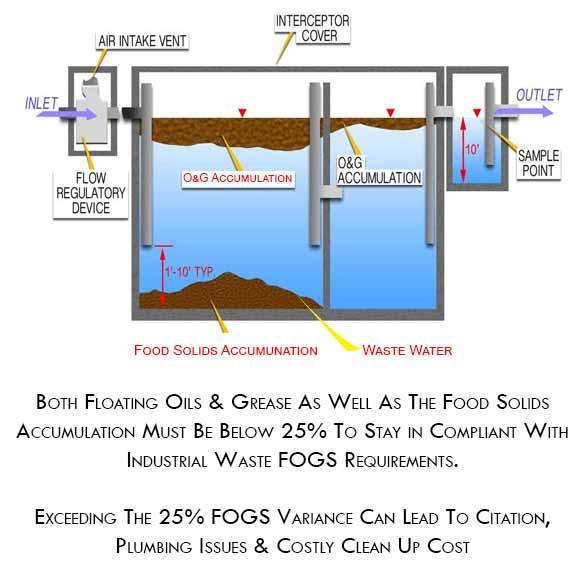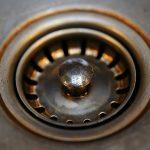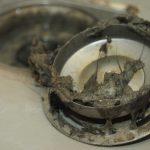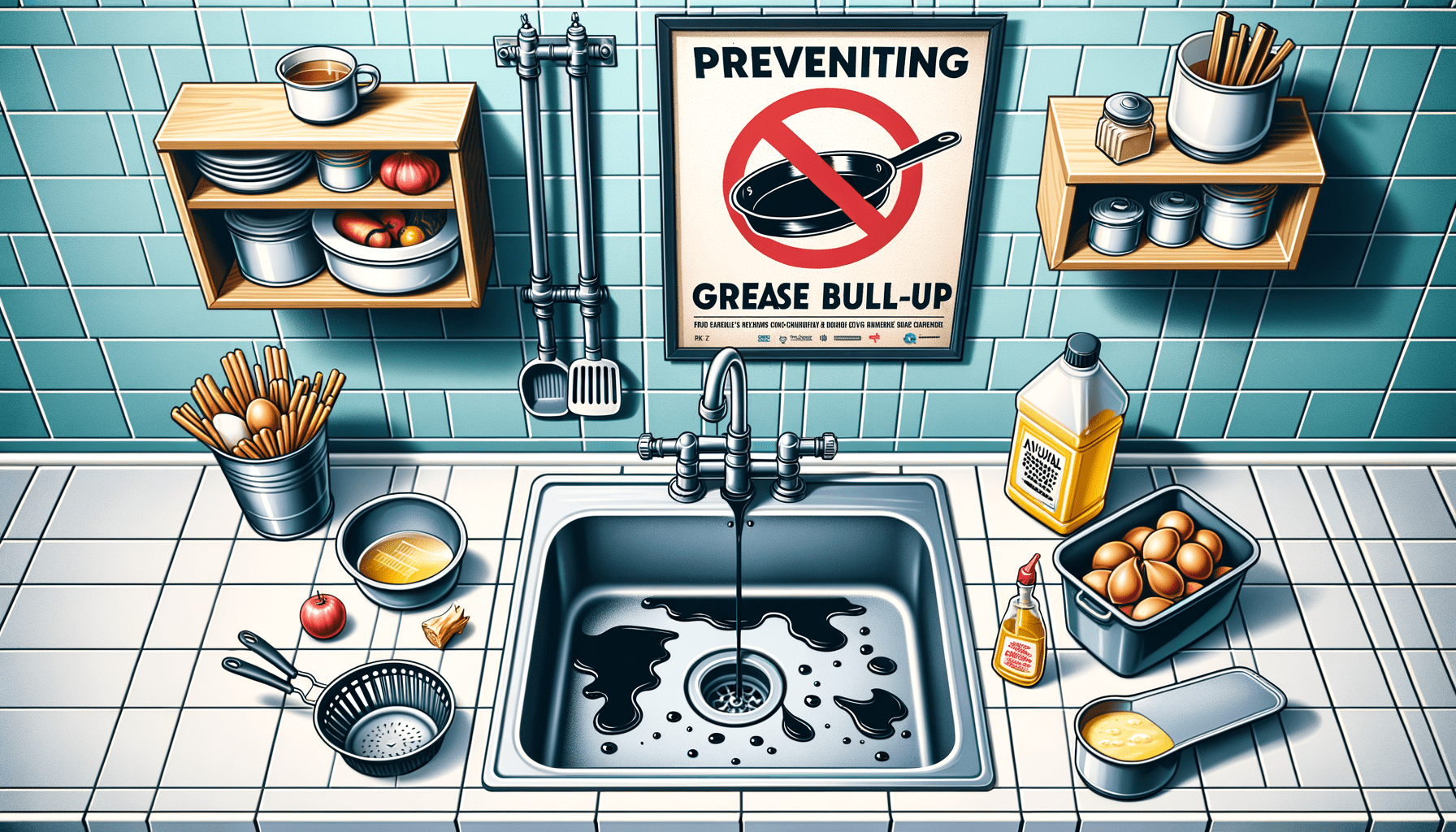If your sink’s been acting up recently, chances are you’re dealing with a common problem: grease build-up in kitchen pipes. But why does this occur and how can we prevent it? Let’s roll up our sleeves and get down to unclogging our understanding first.
Contents
- The FOG Culprit in Pipes
- Concerns with FOG Accumulation
- Proactive Help Against FOG
- Installing a Grease Interceptor
- Responsibility for Interceptor Setup
- Sustaining Kitchen Drains Clear
- Recognizing Grease-Blocked Drains
- Strategies for Grease Removal
- Precautions for Restaurant Owners
- The Bottom Line
- Frequently Asked Questions (FAQ)
The FOG Culprit in Pipes
FOG, or fats, oils, and grease, is the main player behind the scenes when as far as blocked pipes are concerned. These substances solidify when cooled, causing accumulations in your plumbing. In fact, FOG contributes to 47% of the 36,000 sanitary sewer overflows occurring annually in the US.
Concerns with FOG Accumulation
FOG becomes a stubborn blockage over time, hindering the flow of water. These blockages can lead to kitchen floods, nasty odours and are challenging -and oftentimes costly- to remove. Alarming stats reveal that approximately one-third of all sewer blockages are caused by grease.
Proactive Help Against FOG
Prevention is better (and cheaper) than cure applies well here. Firstly, never pour FOG down the sink. Instead, let it cool after cooking and dispose of it into your waste container or via specialised fat recycling facilities where possible. Also, using a grease trap in your sink can provide significant help in arresting FOG before it infiltrates your pipes.
Installing a Grease Interceptor
A grease interceptor functions as a filter for solidified fats, stopping them from entering your drainage system. According to a study, it was found that proper grease management such as this vastly reduce maintenance needs by up to 40%. These interceptors can be installed under the sink or underground for larger capacities.
Responsibility for Interceptor Setup
A professional plumbing service like Roto-Rooter can help with installing grease interceptors, ensuring peace of heart and prevention of potential damage. This investment could save you the expenses involved in unblocking grease-filled pipes, contributing significantly to the long-term sustainability of your sanitary sewer systems.
Sustaining Kitchen Drains Clear
Besides using a grease interceptor, draining boiling water down your sink every week helps dissolve some FOG build-ups. When combined with a dash of vinegar and baking soda, your drains stay in good shape for much longer.
Recognizing Grease-Blocked Drains
If water refuses to go down your sink or if there are unpleasant smells, there might be a grease-blockage. Preventive checks and prompt actions prevent major clogs.
Strategies for Grease Removal

Use a plunger or a plumber’s snake for minor blockages while heavy ones may need an expert plumber’s intervention. Hydraulic engineering solutions, such as drain cleaners or sump pumps can also prove handy in such situations.
Precautions for Restaurant Owners
Due to high volumes of FOG disposal, restaurant owners must pay special attention to well-maintained grease traps. Australian water authorities report about 6,000 sewer blockages each year due to grease and fat poured down sinks -an indication of the importance of proper FOG management in restaurants.
The Bottom Line
To sum up, managing FOG is a crucial part of kitchen cleanliness. Properly installed and maintained grease interceptors can spare you the mess, odour, and costs associated with blocked drains. Thus, prevention today leads to a flow-free kitchen tomorrow!
Frequently Asked Questions (FAQ)
What is FOG and why is it harmful?
FOG refers to fats, oils, and grease, commonly found in cooking and food waste. It solidifies when it cools, forming blockages in plumbing systems that can result in kitchen floods and nasty odors. It is not easily flushed through plumbing systems and requires costly intervention when it forms a blockage.
How can I dispose of FOG properly?
Instead of pouring FOG down the sink, let it cool and solidify after cooking. You can then scrape it into your waste container or take it to specialised fat recycling facilities, where available.
What is a grease interceptor?
A grease interceptor acts as a filter for solidified fats, preventing them from entering your drainage system. They can be installed under the sink or underground for larger capacities and require regular maintenance and cleaning to stay effective.
How often should I clean my grease interceptor?
The frequency of cleaning your grease interceptor depends on its size and the volume of FOG your household or business generates. As a good rule of thumb, it should be cleaned once it’s a quarter full of FOG and food waste, or every one to three months.
What are some telltale signs of a grease-blocked drain?
Common signs of a grease-blocked drain include water refusing to go down the sink, unpleasant smells coming from the sink, and the presence of gurgling noises when the sink is draining.
Can I use boiling water to break down FOG?
Yes, pouring boiling water down your sink once a week can help to dissolve and flush some FOG build-ups. However, this method is most effective when there are minimal amounts of FOG in your drains and should not be relied upon as the sole solution for FOG management.
- How Do I Know When It Is Time to Replace a Cracked Porcelain Sink? - November 14, 2024
- What Should I Do If My Water Meter Is Spinning Unexpectedly Fast? - November 14, 2024
- Can a Plumber Help Me Replace a Leaking Garden Tap? - October 14, 2024
Related posts:
 How Do I Prevent Food Scraps From Clogging My Kitchen Drain?
How Do I Prevent Food Scraps From Clogging My Kitchen Drain?
 What Causes Foul Odours in Kitchen Drains?
What Causes Foul Odours in Kitchen Drains?
 What Causes a Gurgling Noise in My Pipes?
What Causes a Gurgling Noise in My Pipes?
 What Are Your Top Tips to Help Prevent Shower Drain Clogs?
What Are Your Top Tips to Help Prevent Shower Drain Clogs?
 What Are The Top Causes of Foul Odours From My Drains?
What Are The Top Causes of Foul Odours From My Drains?
 How Do I Prevent Hair From Clogging My Shower Drain?
How Do I Prevent Hair From Clogging My Shower Drain?



